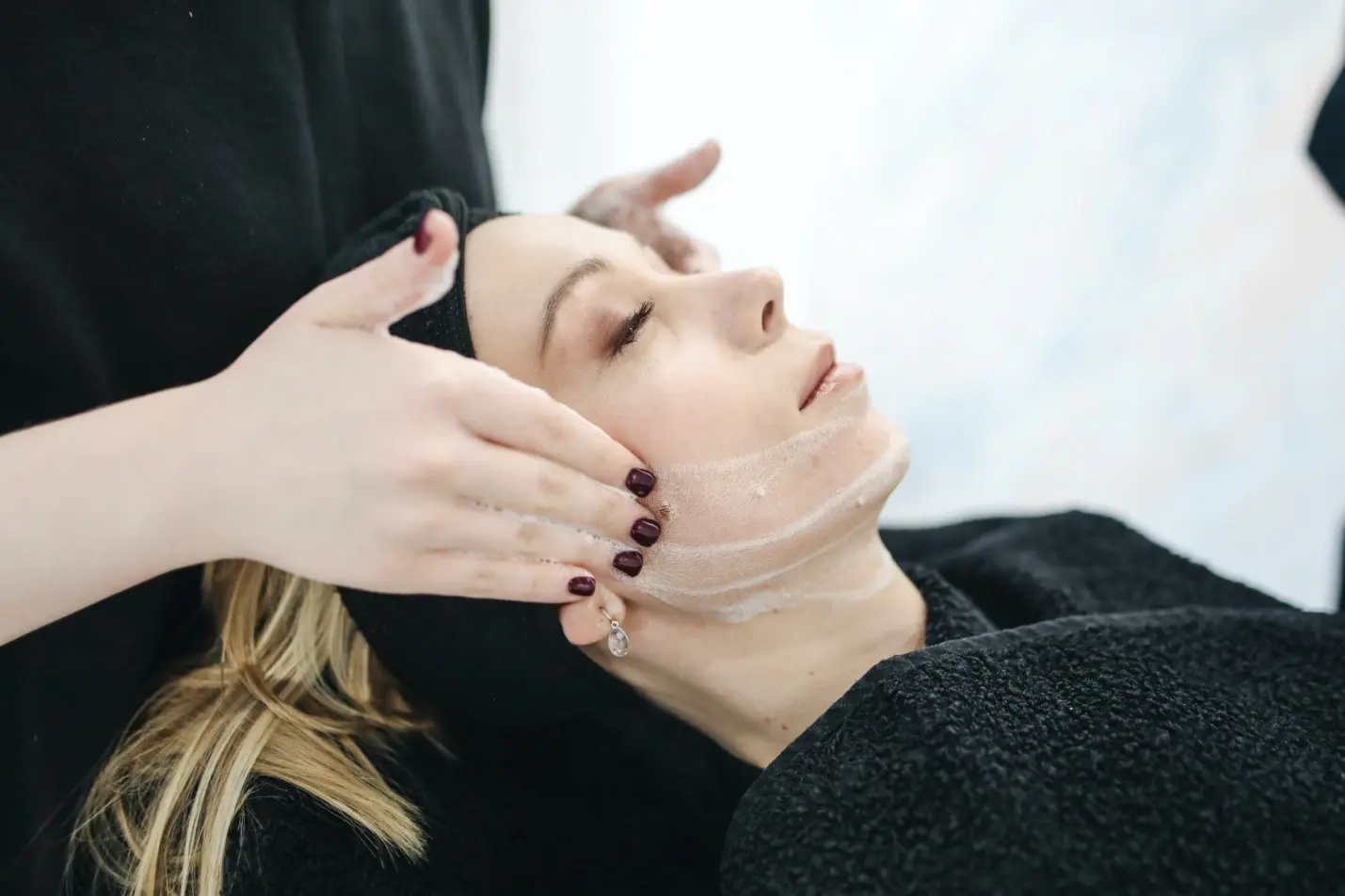
Chemical peels are a popular cosmetic treatment. It involves the application of a chemical solution to the skin in order to exfoliate and remove the outer layers of damaged and dead skin cells. The process aids in stimulating the growth of new skin cells, resulting in more even-toned, smoother skin. Chemical peels can be used to treat various skin concerns, including acne, sun damage, age spots, fine lines, wrinkles, and uneven skin tone and texture.
Read on to learn more about this cosmetic procedure.
How Are Chemical Peels Performed?
Chemical peels can be administered to the face, neck, chest, hands, and other areas of the body. They can be classified based on the depth of penetration into the skin. Superficial peels, also known as light or lunchtime peels, only penetrate the outermost layer of the skin and are used to improve the appearance of mild skin discoloration and rough texture.
Medium-depth peels penetrate deeper into the skin to treat moderate sun damage, fine lines, and acne scars. Deep peels penetrate the deepest layers of the skin and are used to treat severe sun damage, deep wrinkles, and scars.
There are several types of chemical peels, and each has its unique benefits and considerations. Alpha hydroxy acids (AHAs) and beta hydroxy acids (BHAs) are commonly used in superficial peels to exfoliate the skin and improve its texture.
Trichloroacetic acid (TCA) is a medium-depth peel that can improve the appearance of fine lines, wrinkles, and age spots. Phenol peels are a type of deep peel that can provide dramatic results but require a longer recovery period and increased risk of complications.
After a chemical peel, the skin may be red, flaky, and sensitive for several days or weeks. It is important to protect the skin from sun exposure during the healing process and to follow any post-treatment instructions provided by the healthcare provider.
Signs You Need a Chemical Peel
There are several other reasons why a person may consider getting a chemical peel.
Uneven Skin Tone
Chemical peels can help to even out the skin tone by removing the outer layer of dead and damaged skin cells. This can reduce the appearance of hyperpigmentation, dark spots, and other discoloration on the skin.
Fine Lines and Wrinkles
Chemical peels work by stimulating collagen production in the skin. Collagen is the protein that gives skin its firmness and elasticity. By increasing collagen production, chemical peels can help to reduce the appearance of fine lines and wrinkles on the face, neck, and hands.
Acne and Acne Scars
Chemical peels can help reduce the appearance of acne and the scars caused by it by exfoliating the skin and unclogging pores. This can help to prevent future breakouts and reduce the appearance of existing blemishes.
Sun Damage
Sun damage can cause dark spots, freckles, and other discoloration on the skin. Chemical peels can help to remove the outer layer of damaged skin cells, which can reduce the appearance of these blemishes and improve the overall texture and tone of the skin.
Dull Skin
Chemical peels can help to improve the texture of the skin and give it a healthy glow. By removing the outer layer of dead and damaged skin cells, chemical peels can reveal fresh, new skin underneath, which can make the skin look brighter and more radiant.
Oily Skin
Chemical peels can help to control oil production in the skin by removing excess oil and unclogging pores. This can help to prevent breakouts and reduce the appearance of enlarged pores. Salicylic acid and glycolic acid are commonly used in chemical peels for oily skin.
Age Spots
Age spots, also known as liver spots, are areas of hyperpigmentation that occur as a result of sun damage or aging. Chemical peels can help to reduce the appearance of age spots by removing the outer layer of damaged skin cells and promoting the growth of new, healthy cells. A chemical peel with a combination of glycolic acid and trichloroacetic acid (TCA) may be effective for treating age spots.
Melasma
Melasma is a condition that causes dark patches on the skin, usually on the face. Chemical peels can help to reduce the appearance of melasma by exfoliating the skin and reducing the production of melanin, the pigment that gives skin its color. A combination of TCA and hydroquinone may be used in a chemical peel to treat melasma.
Rough Texture
Chemical peels can help to improve the texture of the skin by removing the outer layer of dead and damaged skin cells. This can make the skin feel smoother and softer to the touch. A chemical peel with alpha hydroxy acids (AHAs) or beta hydroxy acids (BHAs) can be effective for treating rough skin texture.
Uneven Skin Texture
Chemical peels can help to improve the overall texture of the skin by smoothing out rough patches and reducing the appearance of fine lines and wrinkles. A chemical peel with a combination of TCA and AHAs can be effective for treating uneven skin texture.
Who Shouldn't Get a Chemical Peel?
While chemical peels can be a safe and effective treatment for many people, there are certain individuals who should avoid getting chemical peels or be cautious when considering them. Here are some examples of when you should be cautious of the treatment.
Pregnant or Breastfeeding Women
There is limited research on the effects of chemical peels on pregnant or breastfeeding women, so it is generally recommended that they avoid chemical peels until after they have given birth or stopped breastfeeding.
Individuals with a History of Keloid Scarring
Keloid scarring is a type of raised scar that can develop after an injury or surgery. Chemical peels can increase the risk of keloid scarring, so individuals with a history of keloids should avoid chemical peels. It is also crucial to note that chemical peels cannot be used as a treatment for keloid scars under any circumstances.
People with Certain Skin Conditions
Certain skin conditions, such as eczema, psoriasis, rosacea, and active acne, can be worsened by chemical peels. It is important to consult with a skincare professional or dermatologist to determine if a chemical peel is safe and appropriate for your specific skin condition.
Conclusion
It is important to consult with a licensed skincare professional or dermatologist to determine the right type and strength of chemical peel for your skin type and concerns. They can help you understand the risks and benefits of the treatment and provide you with post-treatment care instructions to ensure the best possible results.

Recent Comments